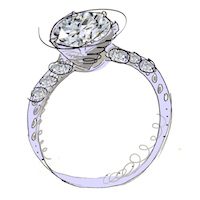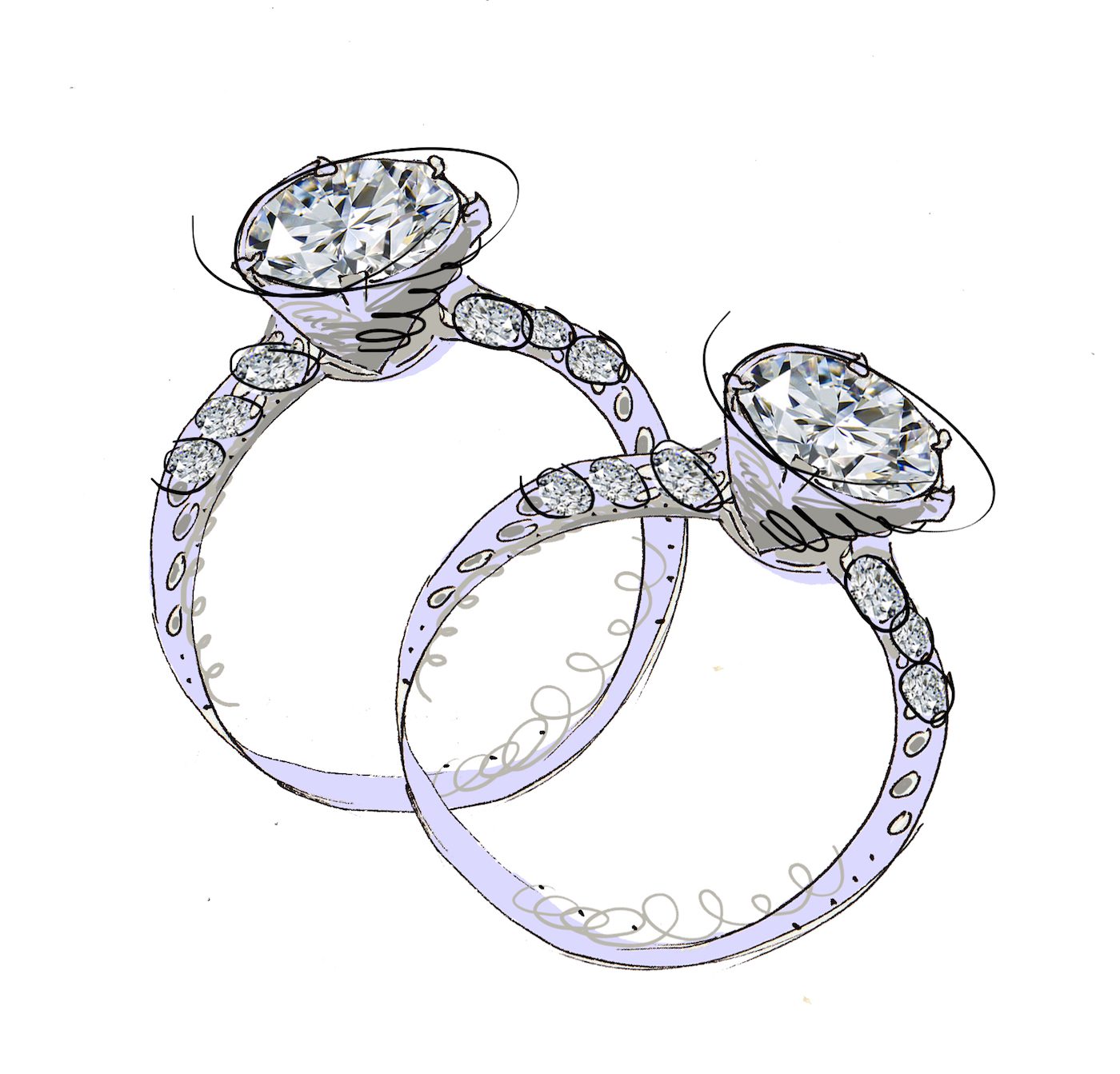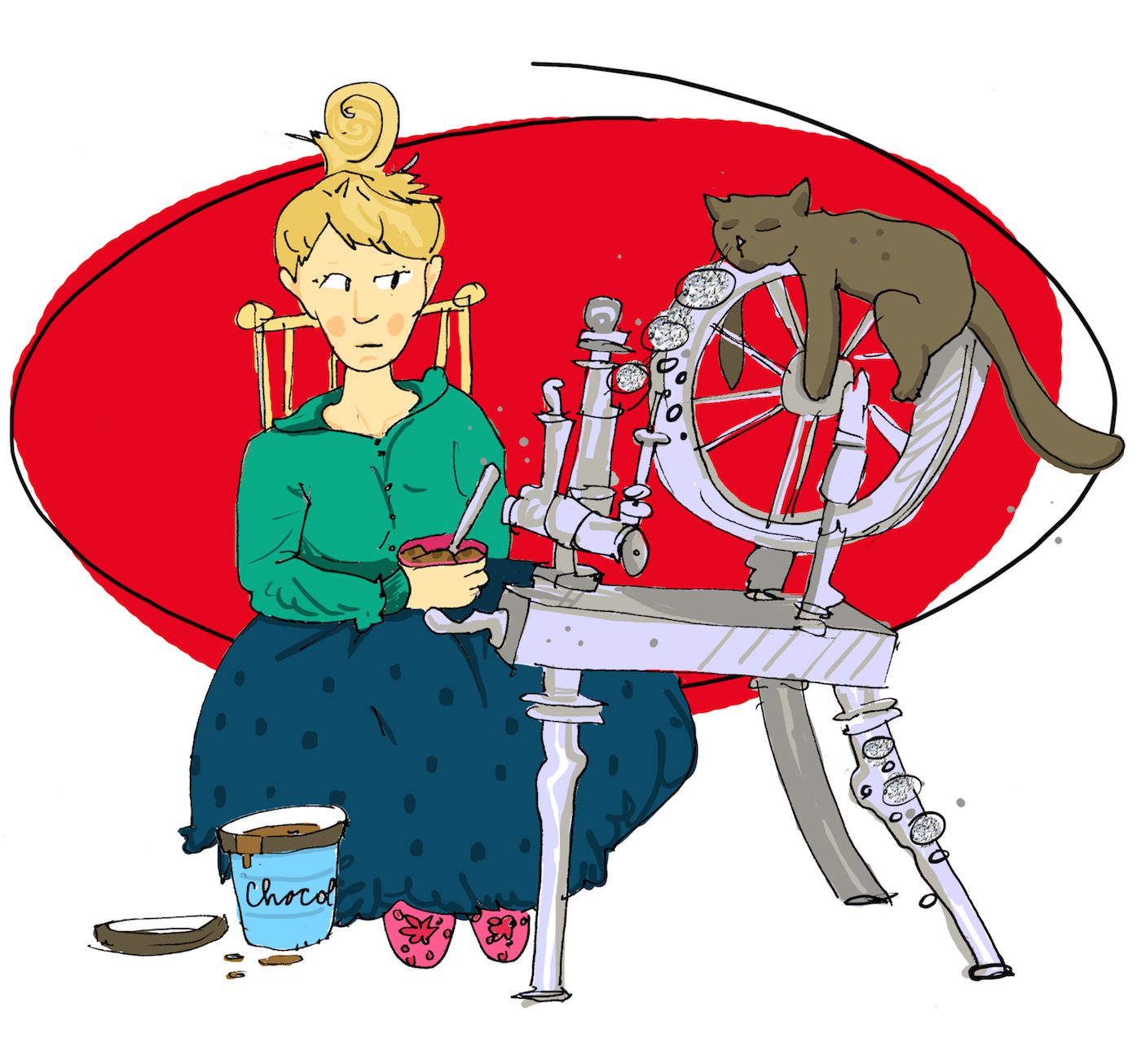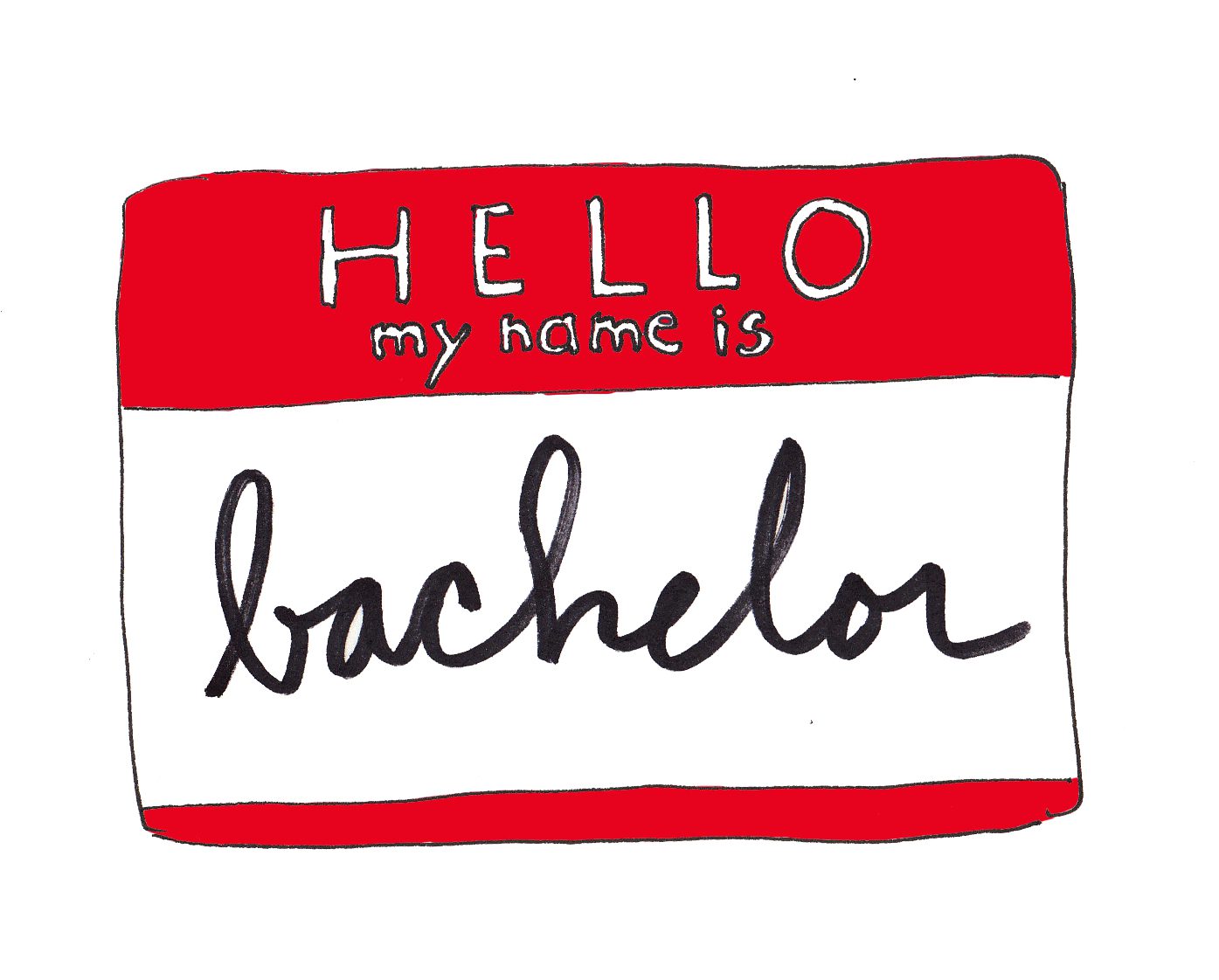
This past January 1st I watched as my friend jumped into the freezing Atlantic Ocean at Coney Island with all of her clothes on.
This was the annual Polar Bear Swim. You could either pay $20 and go in with about a thousand other people in a roped off area, or you could just run into the water of your own volition a little ways down the beach free of charge. The sky was clear, the wind was cold, and the light on the water was bright as diamonds. Obviously we had opted for the less conformist route.
Having been unable to find a) my bathing suit or b) the will to match her gumption, I stood on the sand holding her coat, casually taking swigs straight from the champagne bottle and offering shouts of encouragement. Then she set a holiday-themed marshmallow Peep free on the waves, and then we got Russian food, and then we went to Target.
“How do we know Target will be open today?” she asked me on the Q train.
“Because we live in a consumerist hell,” I said, cheerfully.
Once at Target, we got Starbucks and piled our coats and bags into a big red shopping cart. My friend’s pants were still wet because she hadn’t brought a dry pair, and yet she refused my offers to buy her something else to put on. This may be because I insisted it be a tracksuit, and that it be as hideous as possible.
“Let’s go through every department,” she said to me with glee.
“That sounds like a great idea,” I replied earnestly.
It’s possible we were a little tipsy.
In the sock aisle, I ended up picking out some pairs I thought my mother would like. I then walked up to a complete stranger, thinking she was my friend without really looking, and started explaining how much I thought my mom would like my selection.
“Oh,” I said, when I looked up to see the puzzled, older black woman I had mistaken for my Asian American friend. “That’s not you.” My friend was standing just to the side. Twenty minutes later we were still in hysterics about it.
By the time our day of shopping was over we’d each purchased the following identical items: steel wool, grapefruit-scented all-purpose cleaner, and matching cubic zirconia engagement rings. They came with “round brilliant” cut solitaire stones and sterling silver pavé bands, and we spent the rest of the evening gesturing unnecessarily with our left hands.
They came with “round brilliant” cut solitaire stones and sterling silver pavé bands, and we spent the rest of the evening gesturing unnecessarily with our left hands.
At dinner in a hip ramen restaurant, a tall, dark and handsome man leaned over our table and interrupted my faux-gagement gesticulations to ask what it was I’d ordered.
“Looks good,” he said.
“It’s working!” my friend whispered when he left.
Except we didn’t get faux-gaged to pick up men with loose morals, but rather to be taken more seriously in professional settings, and deter unwanted attention. My friend said she also used to wear a wedding ring to job interviews, and thought it helped her chances.
“I totally get it,” the saleslady had said to us when we explained our purchase. “They’re not allowed to ask you about it, but it’s like someone sees that and thinks, I guess she’s a keeper.”
I was already in love with our rings. They felt like magical talismans, like a big “eff you” to the Disney Princess/Bridal Industrial Complex, and because they matched, very much like friendship bracelets, too. I walked home alone that night through the dark streets, smiling.
When I used to contemplate facing my 35th birthday while single, I often thought of Mary Bailey from It’s A Wonderful Life. Well, not Mary Bailey exactly, but Mary Not-Bailey, the Mary of the alternate Pottersville universe where there is no George. We’ve already met or heard about how everyone else from Bedford Falls fares in this George-less world—Gower the tramp, Violet the prostitute, the institutionalized uncle and the brother who died in childhood. But with Mary they’ve saved the worst for last.
“Please Clarence, tell me where she is!” George demands, hysterical.
“You’re not going to like it George,” Clarence replies, pausing before he delivers the bad news.
“Where is she?!”
“She’s an old maid. She never married.”
“Where is she?! Where’s Mary?! Where is she?!” George wants to know, increasingly frantic.
Says Clarence, shouting, “She’s just about to close up the library!”
Cut to poor Mary, stepping timidly through the snow, the crosshatched shadows of leafless branches falling across her makeup-free face. Here is the boogeyman that little girls are threatened with since childhood via popular culture. This is what happens if you don’t get married, we’re told: Loneliness! Irrelevance! Bad eyesight! Tweed! That darn Mary Not-Bailey! Oh, the tragedy of not liking men who aren’t George, and instead liking books.
What can I say? Love is mysterious and often hard. This same friend of mine was once in a large deli packed with people. For some reason she decided that she would imitate the “nom nom nom” cat from YouTube, the one purring while enjoying a spoonful of sour cream.
“Nom nom nom,” she said aloud to the room. And there, across the way, was a tall handsome man with dark wavy hair, staring directly back into her eyes.
“Nom nom nom,” he said.
She tried to get over to him but was lost in the crowd. She even placed a Craigslist Missed Connections ad, but no dice.
One time I tried dating a man who liked to shower me with presents. He insisted that I was very, very special, but less than a month after inviting me to meet his parents he’d done a 180 and was doing the same routine with someone else.
Spinsterhood—though ostensibly an outdated concept—nevertheless hangs over many women from their mid-20s onward like an imagined sword of Damocles, a sword whose blade is engraved with the likenesses of a Ben & Jerry’s carton and nineteen cats.
engraved with the likenesses of a Ben & Jerry’s carton and nineteen cats.
Originally, ‘spinster’ meant simply a female person who spins thread. But because this was how unmarried women were expected to occupy themselves, by the 17th century “spinster” had come to mean “a woman still unmarried and beyond the usual age for it.” That’s me now, by the way. I have turned 35, am unmarried, and well, you get the picture. But I am not a spinster or an old maid. In late 2013, I decided that I preferred the term bachelor—and no, I did not mean bachelorette. Just hear me out.
Unless she’s handing out roses on reality television, a bachelorette is the mayfly of single people. She exists only for one night in a haze of tiny veils, shots, and oiled-up male strippers. A bachelorette is a woman about to get married while a bachelor is a person in his own right. Being a “bachelor” says almost nothing definitive about the nature of one’s personal life other than that they are unwed. To illustrate this, two famous fictional bachelors came to mind, though they are polar opposites: James Bond and Sherlock Holmes. Sure, there are some similarities. Both are iconic, have a certain sartorial flair, and find themselves regularly in the general vicinity of criminals. But as far as their romantic lives are concerned—the part that makes them bachelors—they couldn’t be more different. Bond is profligate with his female costars, while Holmes remains entirely chaste. And that was my point. Which is it, then, for a bachelor? Holmesian or Bondian? Apollo or Dionysus? Narcissus or Goldman? The aesthete or the voluptuary? Or somewhere in between? No such interesting dichotomy is available to the unmarried woman. Archetypally, a woman who isn’t a wife or mother is either the virgin or the whore—a much baser and more pejorative interpretation of the Apollonian or Dionysian binary if ever there was one. We no longer say “stewardess” but rather “flight attendant.” We do not describe Maya Angelou as a “poetess,” nor refer to Zadie Smith as an “authoress.” My general practitioner is not a “doctorette.” Why then can’t a woman be a bachelor? Must it really only describe men?
A bachelor can be confirmed or temporary, filled with hope or with resignation, lonely or content, eligible or not particularly so. He can be looking for love or not looking for it. He can look but not find it, and he can also not look and yet have love come barging in on him nonetheless, thrown across his path while he’s in the middle of, well, something more important.
When I think about relationships that I idolize from literature, they are almost all friendships based on loyalty and adventure. Holmes and Watson. Frodo and Sam. Calvin and Hobbes. Two different personalities complementing each other in the service of a quest: solve the case, save Middle Earth, find something interesting to do on the weekend.
(Another reason I might still be single: I’m a giant nerd.)
But nerd or party girl, Apollo or Dionysus, Holmesian or Bondian, it’s my business what kind of bachelor I am. Single women in their 30s get a lot of crap for being “picky.” Which means, really: it’s too late for lassoing the moon; just pick someone, anyone, who will have you. But most of the time I think that the reason we are “still single” is that in the past we weren’t nearly picky enough. We undervalued ourselves and wasted our own time.  We backed the wrong horses. I couldn’t have known this when I was 20 or 25 or 28 or even 30, but simply growing up and liking myself, finally understanding how I deserve to be treated, is the happily-ever-after I didn’t know I could hope for. And if wearing a faux wedding band meant my professional life would run more smoothly or I could avoid jerks at a bar, then so be it.
We backed the wrong horses. I couldn’t have known this when I was 20 or 25 or 28 or even 30, but simply growing up and liking myself, finally understanding how I deserve to be treated, is the happily-ever-after I didn’t know I could hope for. And if wearing a faux wedding band meant my professional life would run more smoothly or I could avoid jerks at a bar, then so be it.
Except that the next day after purchasing our matching faux-gagement rings, I checked my email and there was a message from my friend. She had decided to return hers. She still wanted to get a ring, as an act of self-love and to deter men or upend the establishment as necessary, but she didn’t love the one we’d bought. It was a little too big, she said. It wasn’t versatile enough. It was a little too not-her.
I knew what she meant. I was, however, at that moment wearing my own ring for no discernible good reason, while still in my pajamas and writing in bed at 2:30 in the afternoon. I sort of liked the weight of it on my hand, to be completely honest. Like a friendship bracelet, I also sort of liked that it made me feel that I belonged.
I decided to keep my faux-gagement ring, if for no other reason than as a reminder of the good day on which I bought it, when, to paraphrase Bob Seger, I was 35 and didn’t have a care, when I felt like a million, I felt like number one, it was the height of winter and I’d never felt that strong. It was a reminder that the love in our lives comes to us in lots of different ways, but also that it’s important to open to the kind of love that scares us, too. It was only $35, after all. I’d been trying to live so lightly for such a long time, and for some reason it seemed to remind me that, unfair societal expectations aside, sometimes being weighted down a little is good. There must certainly be some middle ground to discover between Donna Reed and Sherlock Holmes, and a confirmed bachelor I most likely am not. But will it be this year that I end up with some more meaningful metal? Next year? Five or ten years from now? I really couldn’t tell you. How long is a piece of string? I’m willing to wait for the good stuff. For the real stuff.
Essentially what I’m saying is, when will my George Bailey show up? Call me when he does, and until then I’ve got stuff to do; I’ll be in the woods or at the library — which is to say, at the playground/Baker Street/on a mission, to recover the microfiche/missile plans/jewels.
Or, you know, just laughing until I cry in the sock aisle at Target, but that’s fine too.
***
Rumpus original art by Kaili Doud.




